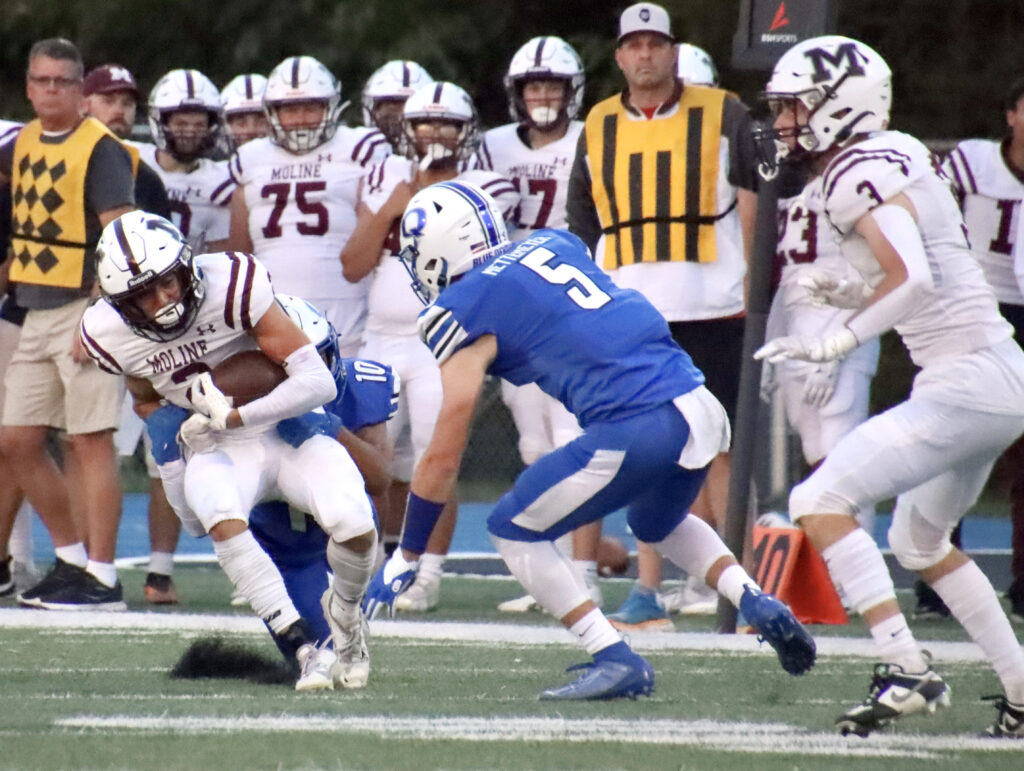IHSA member schools vote against district football format, but scheduling talks will continue

QUINCY — Conference play and rivalry games will remain part of the Illinois high school football landscape for now.
But for how long?
Tuesday, the Illinois High School Association announced the results of the annual by-law referendum with a proposal for statewide district scheduling for football failing. Of the 727 votes cast, 379 member schools voted against the district format, while 272 voted for it and 76 abstained.
This was the highest voter turnout in more than a decade with 89.2 percent of the IHSA member schools participating, largely because of the football district proposal.
The proposal, which was submitted by members of the Apollo, Big Twelve, DePage County and Interstate 8 conferences, called for establishing districts to be determined by the IHSA using geography and classification with eight districts in each class and eight schools in each district. District games would be played in Weeks 3-9 with the top four schools in each district qualifying for the playoffs.
A similar proposal passed in 2018 by a slim margin (17 votes) with districts to begin in 2021, but that was rescinded by a referendum vote in 2019.
So don’t be surprised if this subject is broached again.
IHSA executive director Craig Anderson certainly made that seem so.
As part of Tuesday’s news release, which included 12 of 14 by-law proposals passing, Anderson said the IHSA Board of Directors already had engaged in conversation about creating an ad hoc committee in 2024 to examine football scheduling procedures and policies.
“They want to be proactive in trying to address the issues that are at the root of different football proposals seemingly being brought forth each year,” Anderson said. “They recognize the myriad issues in IHSA football are unique and can be based on geography, school size, conference affiliation, and the traditional success of a program, which is why no recent proposals have garnered enough support to pass.
“There is likely no singular answer to these issues, but the Board wants to explore the idea that a large and diverse group from around the state might be able to find some solutions that the high school football community in the state would support.”
Some of the issues the committee will need to examine include travel, lack of 11–man varsity programs to fill the 512 slots in the district plan, questions of competitive balance and building a viable model for member schools to see.
This proposal lacked a demonstration on how the system could work.
The questions that came with the proposal were numerous, including how schools schedule underclass games.
“What about our lower levels? Who is going to play us?” Quincy High School coach Rick Little said. “I find it hard to believe a Normal Community or someone like that is going to come down on a Monday night for a JV game. So that is a big concern.”
Plus, losing the tradition of the Western Big 6 Conference is a major concern.
“The reason I say no to this proposal is I love our conference,” Little said. “I love the fact that there’s history. My fear is if districts came and we tried this and in the end it came and went that we’d never have that back. I love what we have.
“There are headaches and hassles in trying to find games, but at the end of the day, the conference, the tradition, the history, the relationships far outweigh the benefit of a district format.”
Miss Clipping Out Stories to Save for Later?
Click the Purchase Story button below to order a print of this story. We will print it for you on matte photo paper to keep forever.
